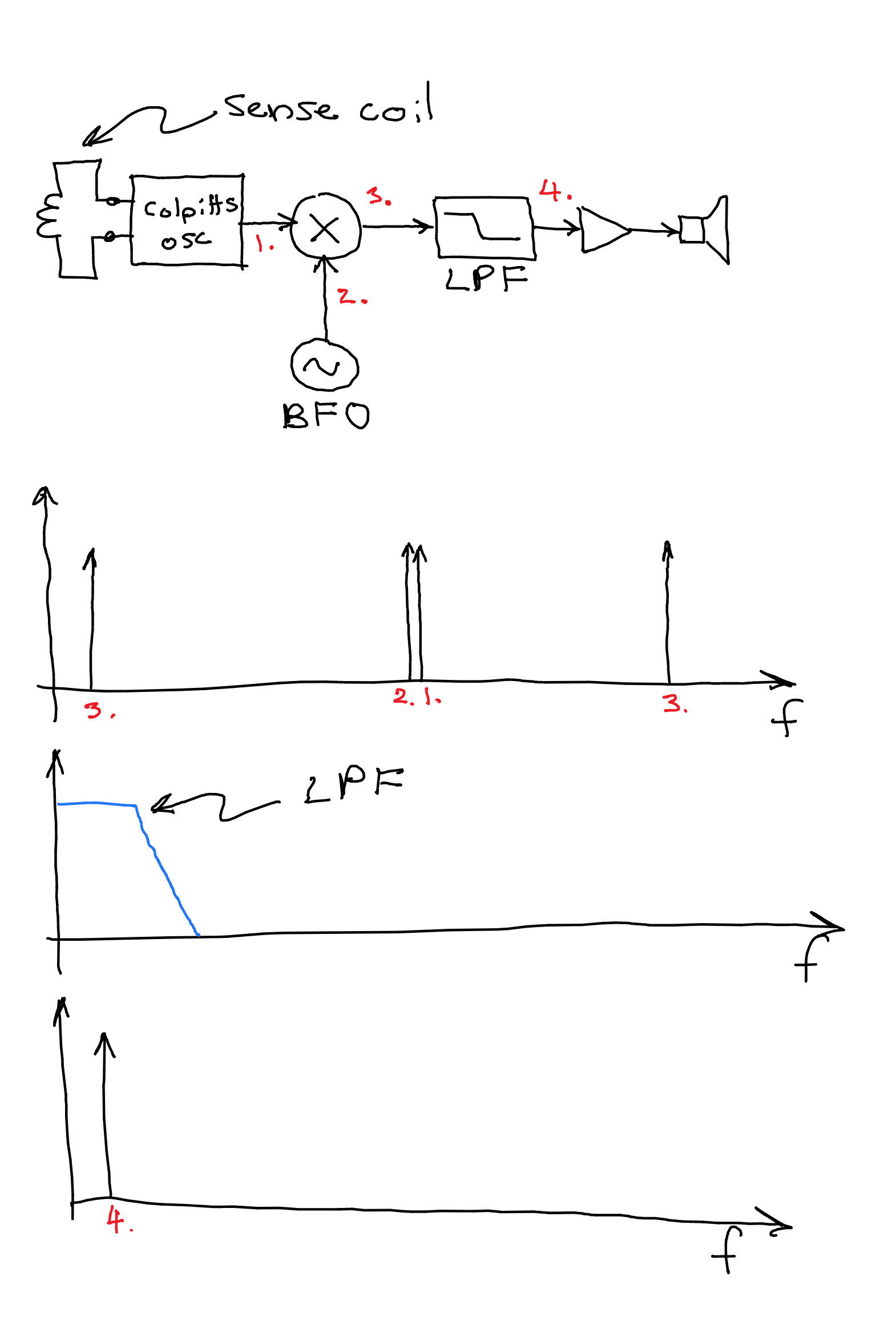After a bit of reading online I determined that there were a few different types of metal detector:
- BFO (beat freq oscillator) detector: nearby metal detunes a harmonic oscillator, and the frequency shift indicates a hit
- Induction balance detector: a TX coil sends a pulse and an RX coil receives the pulse, frequency and phase difference indicates a hit
- Pulsed Induction detector: a large magnetic pulse is created and the time for the field to decay is recorded, nearby metal changes the decay time
There are a lot of terrible explanations of how the different types of metal detectors work, and there are a lot of simple "science kit" circuits out there, most of the best explained projects I found were here on hackaday.io. I kinda just read as much as I could, and experimented with the parts that I had to get a feel for the different technologies. Here's brief summary of what I found:
Pulsed Induction Detector:
These use some black magic to work, and seem well beyond the limits of the stuff in my parts bin/the time I had, since they usually seem to require a microcontroller and I didn't want to spend a lot of time writing code, or trying to build someone else's project. I didn't even try to experiment with a PI detector.
Induction Balance Detector:
These seem simple enough, and there are circuits out there that people claim work, such as this frustratingly simple 555 timer based design https://blog.circuits4you.com/2015/07/metal-detector-circuit.html.
The basic description is that the transmit coil is connected to an oscillator, and that the receive coil is connected to an amplifier/pulse detector. The complicated part is that the coils are some how arranged (with the aid of shielding) such that the RX coil is only weakly coupled to the TX coil when no metal is present, when metal is nearby the RX coil couples more strongly to the TX coil and a signal is detected.
The difficult part is arranging the coils such that RX is mostly shielded from TX. For all my experimentation I could not find an arrangement that worked. I could either get complete coupling between the coils, in which case the circuit was basically a transformer and not sensitive to metal, or I could get absolutely no coupling and no sensitivity to metal at all.
eventually I gave up on getting an IB detector to work as well, which leaves us with the final option:
BFO Detector:
A BFO detector works by setting up a harmonic oscillator (e.g. Colpitts) such that the sense coil is part of the tank circuit. Thus when metal is brought nearby the sense coil the inductance of the sense coil changes, which in turn changes the resonant frequency of the oscillator.
The main oscillator is then mixed with another local (Beat Frequency) oscillator that is tuned to nearly the same frequency as the sense oscillator, the slight difference in frequency between the sense oscillator and the BFO is down shifted into the audio spectrum, where it is heard as a constant tone.
When nearby metal detunes the sense oscillator the relative difference between the BFO and the sense oscillator changes, which results in the frequency of the mixer product changing, which is heard as a shift in pitch of the tone in the earphones.
A block diagram and frequency spectrum:

This is the simplest type of metal detector (and probably also the worst), and the stuff in my parts bin was conducive to this design, so that's what I ended up going with.
In the next log I'll show the circuit I came up with
 zaphod
zaphod
Discussions
Become a Hackaday.io Member
Create an account to leave a comment. Already have an account? Log In.